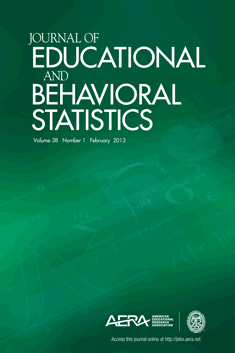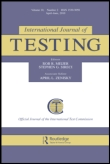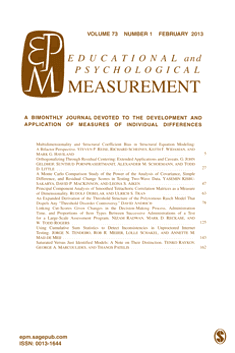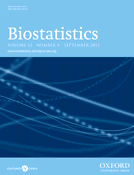
JOURNAL OF EDUCATIONAL AND BEHAVIORAL STATISTICS
Scope & Guideline
Innovating Methodologies for Educational Excellence
Introduction
Aims and Scopes
- Psychometric Modeling:
The journal focuses on developing and refining psychometric models, including item response theory (IRT), cognitive diagnosis models, and other advanced statistical techniques that assess educational outcomes and learning processes. - Statistical Methods for Education:
Research published in the journal often employs complex statistical methodologies, such as Bayesian analysis, regression discontinuity designs, and multilevel modeling, to address educational questions and improve measurement practices. - Algorithmic Fairness and AI in Education:
A unique contribution of the journal is its exploration of algorithmic fairness and the implications of artificial intelligence in educational assessment, ensuring that educational measures are equitable and just. - Longitudinal and Multisite Studies:
The journal also emphasizes the importance of longitudinal data analysis and multisite trials, providing insights into the dynamics of educational interventions over time and across different contexts. - Causal Inference and Treatment Effects:
A core area of focus is the application of statistical methods to identify causal relationships and treatment effects in educational settings, which is crucial for evidence-based policy making.
Trending and Emerging
- Artificial Intelligence and Educational Measurement:
A significant increase in research related to AI and its applications in educational measurement highlights the growing interest in leveraging technology to enhance assessment practices and address issues of fairness and accountability. - Causal Inference Techniques:
There is a marked trend toward employing advanced causal inference techniques, such as Bayesian methods and propensity score matching, to better understand the effects of educational interventions and policies. - Complex Cognitive Diagnostic Models:
Emerging research focuses on complex cognitive diagnostic models that incorporate response times and item characteristics, indicating a shift towards more comprehensive assessments of student learning. - Intersectionality and Fairness in Assessment:
The rise in studies examining intersectional fairness in educational assessments reflects a growing awareness of the need to address diversity and equity in educational measurement practices. - Longitudinal Data Analysis:
An increasing emphasis on longitudinal data analysis showcases the importance of understanding educational outcomes over time, as researchers seek to capture the effects of interventions and individual growth trajectories.
Declining or Waning
- Traditional Measurement Models:
There appears to be a decline in the publication of traditional measurement models that do not incorporate modern statistical techniques or the complexities of educational data. The field is moving towards more nuanced models that account for various biases and complexities. - Basic Statistical Approaches:
The journal has seen fewer papers focusing on basic statistical approaches, such as simple regression techniques, as researchers increasingly seek to apply more sophisticated methods that can handle the intricacies of educational data. - Generalized Linear Models without Extensions:
There is a noticeable reduction in studies that apply generalized linear models without further extensions or innovations. This suggests a shift towards more advanced methodologies that offer deeper insights into educational phenomena.
Similar Journals

STATISTICAL METHODS IN MEDICAL RESEARCH
Bridging the gap between statistics and healthcare advancements.STATISTICAL METHODS IN MEDICAL RESEARCH is a leading academic journal dedicated to advancing the field of statistical methodologies as they apply to medical research. Published by SAGE Publications Ltd, this prestigious journal focuses on innovative statistical techniques that are pivotal for health-related data analysis and interpretation. With its Q1 ranking in Epidemiology, Health Information Management, and Statistics and Probability as of 2023, it stands out as a vital resource for researchers and practitioners alike. The journal, which has been in circulation since 1992, is widely recognized for its robust contributions to evidence-based medicine and public health, ensuring that practitioners have access to cutting-edge research. Although it currently does not offer Open Access options, the high-impact nature indicated by its rankings and percentile positions solidifies its importance as a go-to source for statistical theories and applications in health research. Researchers, healthcare professionals, and students are encouraged to explore the rich content of this journal to stay abreast of the latest advancements and methodologies.

International Journal of Testing
Transforming Knowledge Through Rigorous Testing InsightsThe International Journal of Testing, published by Routledge Journals, Taylor & Francis Ltd, stands as a pivotal source of knowledge in the realms of education, modeling and simulation, and social psychology. With an ISSN of 1530-5058 and an E-ISSN of 1532-7574, this esteemed journal is recognized for its commitment to advancing the understanding of testing methodologies and their applications across diverse fields. Currently classified in the Q1 category for both Education and Modeling and Simulation, and Q2 for Social Psychology, it maintains a significant impact, ranking 434th among 1543 journals in Educational Social Sciences. The journal fosters high-quality research discussions, providing a platform for researchers, professionals, and students to share innovative insights and findings. Although it is not open access, the journal ensures that groundbreaking studies are disseminated widely to contribute to ongoing academic discourse until 2024 and beyond. With its headquarters in the United Kingdom at 2-4 Park Square, Milton Park, Abingdon OX14 4RN, Oxon, England, the International Journal of Testing continues to be an invaluable resource for anyone involved in testing theory and practice.

Quantitative Methods for Psychology
Transforming Data into Understanding in PsychologyQuantitative Methods for Psychology, with ISSN 1913-4126 and E-ISSN 2292-1354, is a premier open-access journal published by the University of Montreal, Department of Psychology. Since its inception in 2005, this journal has served as a vital resource for the dissemination of cutting-edge research and methodological advancements in psychological science. With a focus on quantitative approaches, it welcomes submissions that explore innovative statistical techniques, data analysis methodologies, and empirical studies that enhance understanding in psychology. The journal’s commitment to accessibility ensures that researchers, practitioners, and students alike can benefit from the wealth of knowledge it offers, fostering collaboration and advancing the field. As an integral platform for sharing significant findings and best practices, Quantitative Methods for Psychology is positioned to make substantial contributions to the landscape of psychological research.

PSYCHOLOGICAL METHODS
Elevating Standards in Psychological Research MethodologyPsychological Methods, published by the American Psychological Association, is a leading journal in the field of psychology, recognized for its rigorous approach to the methodology of psychological research. With an ISSN of 1082-989X and an E-ISSN of 1939-1463, this esteemed journal facilitates the dissemination of innovative methods and analysis techniques that are critical for advancing psychological science. Its impressive ranking as Q1 in both the History and Philosophy of Science and Psychology (miscellaneous) categories underscores its influence, while its Scopus rank places it in the top 2 out of 97 journals in its field, reflecting its high visibility and importance among researchers, professionals, and students. Although not an open-access journal, Psychological Methods continues to serve as a vital resource for the latest advancements and discussions, aiming to enhance the quality of psychological research globally. With a publication history spanning from 1996 to 2024, it remains a cornerstone for scholars committed to elevating the methodological standards prevalent within the discipline.

EDUCATIONAL AND PSYCHOLOGICAL MEASUREMENT
Exploring the Depths of Psychological EvaluationEDUCATIONAL AND PSYCHOLOGICAL MEASUREMENT, published by SAGE Publications Inc, is a premier journal serving as a vital resource for researchers and practitioners in the fields of educational and psychological assessment. With a rich history dating back to 1941, this esteemed journal encompasses a wide-ranging scope, exploring the intricacies of measurement techniques and their implications within applied mathematics, psychology, and education. Notably categorized in Q1 quartiles across various fields, including Applied Mathematics and Educational Psychology, the journal ranks impressively in Scopus, reflecting its high impact and relevance—ranked #82/635 in Applied Mathematics and #232/1543 in Education. The journal’s commitment to advancing knowledge in educational measurement equips scholars with essential insights and methodologies, making it an essential tool for advancing scholarly inquiry and practice. With no open access limitations, EDUCATIONAL AND PSYCHOLOGICAL MEASUREMENT is dedicated to disseminating quality research that influences educational practices and psychological evaluation, thus reinforcing its esteemed position within academia.

Journal of Survey Statistics and Methodology
Transforming Data into KnowledgeJournal of Survey Statistics and Methodology, published by Oxford University Press Inc, is a pivotal platform for advancing research in the fields of Applied Mathematics, Social Sciences, and Statistics. With its ISSN 2325-0984 and E-ISSN 2325-0992, this journal has firmly established itself since its inception in 2013, achieving a remarkable Q1 quartile ranking across various disciplines in 2023, indicating its significant impact and prestige in the academic community. It serves as a key resource for researchers and practitioners committed to enhancing survey methodology, statistical practices, and data-driven decision-making processes. The journal provides a comprehensive assembly of scholarly articles, methodological advancements, and theoretical insights, aimed at enriching the landscape of survey statistics and related domains. Scholars are encouraged to contribute and stay abreast of the latest findings that shape the future of survey research and methodology.

BIOSTATISTICS
Transforming data into impactful biomedical solutions.BIOSTATISTICS is a premier academic journal dedicated to the intersection of statistical methodologies and their applications in the field of biomedicine, published by Oxford University Press. With its ISSN 1465-4644 and E-ISSN 1468-4357, the journal has established itself as a crucial resource for researchers and professionals in the broad disciplines of statistics and probability, particularly within medical contexts. The journal proudly holds a Q1 ranking in multiple categories as of 2023, including Medicine (miscellaneous), Statistics and Probability, as well as Statistics, Probability, and Uncertainty, placing it at the forefront of statistical research. It has also achieved notable Scopus rankings, underscoring its influence and reach—ranking 27th in Mathematics (Statistics and Probability) and 94th in Medicine (General Medicine). Although it does not currently offer open access options, BIOSTATISTICS remains committed to advancing scholarly conversation and innovation in statistical science, making it an essential outlet for both established and emerging researchers. With contributions spanning from 2003 to 2024, this journal is actively seeking to foster an understanding of complex statistical approaches in biomedicine, enabling professionals in the field to apply robust statistical techniques to real-world problems.

International Journal of Assessment Tools in Education
Innovating Tools for Effective Educational EvaluationInternational Journal of Assessment Tools in Education is a pioneering scholarly publication dedicated to advancing the field of educational assessment through innovative tools and methodologies. Published by IZZET KARA and based out of the esteemed Pamukkale University in Turkey, this journal is committed to fostering academic discourse among researchers, educators, and policy makers. With an ISSN of 2148-7456, it aims to bridge the gap between assessment theory and practical application, ensuring that the latest insights in educational measurement can be readily accessed by professionals in the field. The journal promotes open access to its articles, enhancing visibility and facilitating the dissemination of knowledge. By publishing rigorous empirical studies, theoretical discussions, and practical reports, it plays an essential role in shaping best practices in educational assessment, making it an invaluable resource for anyone invested in improving educational outcomes.

PSYCHOMETRIKA
Connecting scholars through high-quality psychometric research.PSYCHOMETRIKA, an esteemed journal published by Springer, serves as a premier platform for advancing the field of psychometrics and quantitative psychology. Since its inception in 1936, the journal has maintained its commitment to disseminating high-quality research, making significant contributions to both applied mathematics and psychology, reflected in its distinguished Q1 ranking in relevant categories as of 2023. With an impressive Scopus ranking, positioned at #117 in Applied Mathematics and #62 in General Psychology, it occupies a critical niche for scholars aiming to explore the interplay between statistical methods and psychological measurement. Although not open access, PSYCHOMETRIKA provides a rigorous peer-reviewed environment that fosters innovative research, methodologies, and theories while offering valuable insights relevant to researchers, professionals, and students alike. Prepared to bridge theoretical knowledge with practical application, this journal is a vital resource for those looking to deepen their understanding of psychometric principles and advance their scholarly endeavors in the behavioral sciences.

TEST
Pioneering research in the realms of statistics and probability.TEST, published by Springer, is a prestigious academic journal that serves as a vital platform for research in the fields of Statistics and Probability. With an ISSN of 1133-0686 and an E-ISSN of 1863-8260, TEST has been at the forefront of statistical methodology and applications since its inception in 1992. As of 2023, the journal holds a Q2 ranking in both the Statistics and Probability, and Statistics, Probability and Uncertainty categories, affirming its position among the leading scholarly publications in these domains. Although it currently does not offer open access, its rich repository of peer-reviewed articles and innovative research findings continues to attract attention from researchers, professionals, and students alike. Positioned within the competitive landscape of mathematical sciences, TEST aims to advance both theoretical developments and practical applications in statistical science through high-quality publications. Researchers can greatly benefit from the insights and methodologies presented within its pages, as elucidated by its Scopus rankings, placing it in the 56th percentile for Mathematics in Statistics and Probability and 53rd for Decision Sciences. For further inquiries, TEST is headquartered at One New York Plaza, Suite 4600, New York, NY 10004, United States, where it continually strives to contribute to the evolution of statistical research.